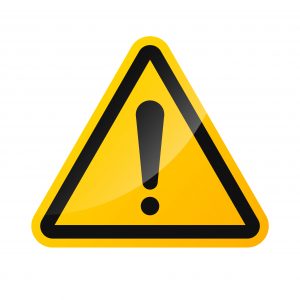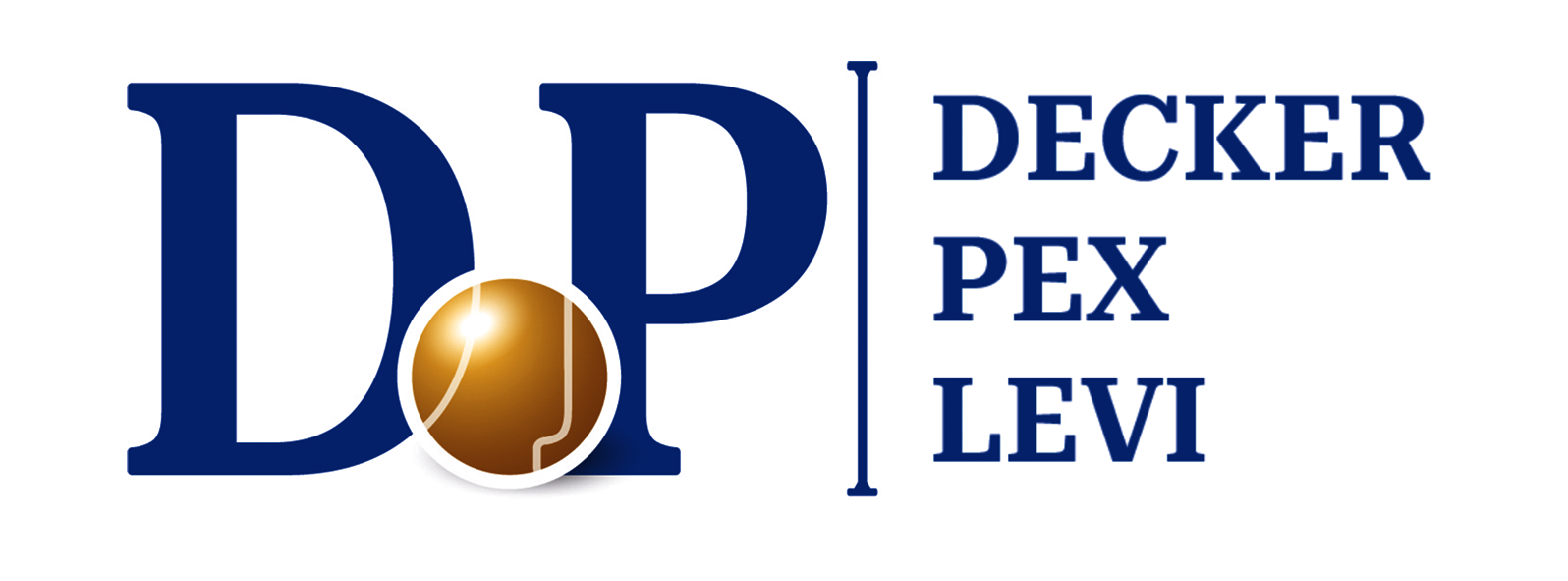The meaning of cease and desist (C&D), in legal terms, usually refers to one party noticing another party of an unlawful activity, requesting its stoppage. It is a common practice to send warning letters (also known as C&D letters) in intellectual property (IP) matters. In this article, an Israeli IP attorney will elaborate on cease and desist meaning with relation to IP. He will further present common cases where C&D letters are being used.
The law firm of Decker, Pex, Levi is an Israeli boutique law firm that specializes in various fields of intellectual property law. Our firm provides comprehensive legal services to both Israeli and international clients. We represent our clients in different IP matters, including trademark cases, copyright cases, trade secrets cases, etc.
Cease and Desist Legal Meaning in Civil Law
 A has done wrongs to B. B would like to sue A for these wrongs. However, we live in times where the legal system is handling loads of cases. Civil court proceedings may take years until a final judgement is given. What can B do in order to make the process faster and more efficient? A powerful tool in this regard is sending a warning letter, which is also known as a cease and desist (C&D) letter.
A has done wrongs to B. B would like to sue A for these wrongs. However, we live in times where the legal system is handling loads of cases. Civil court proceedings may take years until a final judgement is given. What can B do in order to make the process faster and more efficient? A powerful tool in this regard is sending a warning letter, which is also known as a cease and desist (C&D) letter.
Cease and desist has different meanings, and it can also refer to a judicial or a state authority noticing a person on an unlawful activity. However, in this article we will focus on the meaning of cease and desist in civil law cases, more specifically in intellectual property cases.
In Israel, like many other countries, C&D letters are a common practice, as they enable in many cases to save court proceedings and reach a more efficient and quick solution between the parties. It is also important to understand what can be done in cases of receiving a C&D letter by another party. Our firm is well experienced in representing clients in IP matters involving C&D letters. Below we will elaborate on the topic, based on our experience.
Cease and Desist Meaning in Intellectual Property Matters
Intellectual property is the legal field which covers the different protections given to intellectual assets. It includes copyright law, trademark law, patent law, etc. By the nature of those assets, they are often being infringed. Since they are not tangible, the legal boundaries of their use are not always clear. For instance, copyrights in photos are excessively infringed in present times, due to the various possibilities of distributing them via the internet and social media.
In many cases, the infringers are not necessarily aware of the fact that they in fact infringe IP rights. It is therefore particularly important to send C&D letters and to note the infringers about their deeds. The letters usually specify the relevant law provisions that the infringers’ actions allegedly violate. In addition they detail the possible legal actions that may be taken against the infringers.
Possible Outcomes of Sending C&D Letters
 In many cases, after warning the infringers about their deeds, the infringers discontinue their infringing actions. This is one of the reasons why courts encourage plaintiffs to send C&D letters before filing lawsuits against the infringers. Apart from that, the fact that the infringers are discontinuing their actions might affect the final legal outcome of the case.
In many cases, after warning the infringers about their deeds, the infringers discontinue their infringing actions. This is one of the reasons why courts encourage plaintiffs to send C&D letters before filing lawsuits against the infringers. Apart from that, the fact that the infringers are discontinuing their actions might affect the final legal outcome of the case.
Using C&D letters can also save time and increase efficiency, which is crucially important under the load of proceedings in Israel and elsewhere. Below we will elaborate on particular IP fields in which it is common to use the tool of C&D letters.
Copyright Infringement and C&D Letters
Copyright law is the legal field which deals with protection of creative works like songs, films, books, but also computer softwares and figures of electric circuits. The Israeli Copyright Act details a number of actions that the owner of a creative work has an exclusive right to take. Anyone else who wishes to copy a certain creative work, to make a creative work which is based on another work (“derivative work”) or take any other action which is exclusively reserved to the owner, should get the owner’s permission (“license”).
Committing these actions without obtaining a relevant license might base claims for copyright infringement. Similarly, using a copyrighted creative work without giving credit to the creator of the work is an infringement of the creator’s moral right. Although an infringement may base claims in a copyright lawsuit, it is customary to approach infringers before filing a lawsuit, by way of sending a C&D letter.
Sending a C&D letter to copyright infringers contributes in various ways. It first informs the infringers the ownership in the work. It also informs them that their actions are allegedly unlawful and allows them to correct their deeds. For example, instead of having lengthy legal proceedings due to avoidance from giving credit, the infringers get a chance to make a correction and to give credit from now on. The letter may also bring about a negotiation between the parties, in which they may reach a settlement. Our firm specializes in copyright law and is experienced in representing clients in copyright matters where C&D letter is needed.
Trademark Infringement and C&D Letters
 Trademark is an IP asset which is intended to identify products and services. It will usually be in the form of a sign or expression (logo, brand, design, slogan, etc.). The Israeli Trademark Ordinance generally requires trademark registration in order for a mark to gain legal protection. Trademark owners can use their mark exclusively in order to market the products under the classification of goods they are registered for. They can also sell their trademarks, transfer them and even protect them from “thefts” (by taking legal actions against trademark infringements).
Trademark is an IP asset which is intended to identify products and services. It will usually be in the form of a sign or expression (logo, brand, design, slogan, etc.). The Israeli Trademark Ordinance generally requires trademark registration in order for a mark to gain legal protection. Trademark owners can use their mark exclusively in order to market the products under the classification of goods they are registered for. They can also sell their trademarks, transfer them and even protect them from “thefts” (by taking legal actions against trademark infringements).
In the commercial world, there are many cases where a business uses trademarks owned by other businesses, or a mark which may cause deception with registered trademarks. The reason is often the desire of the infringing business to enjoy the goodwill of the other business. However, such a practice is generally unlawful and might base claims for a trademark infringement lawsuit.
Preliminary Actions in Trademark Infringement Cases
Yet, before filing a trademark lawsuit, there are several preliminary actions that are usually taken. Those actions include obtaining documentation of the infringement. It can be done by saving screenshots of the infringement, if it appeared on web pages. When the infringement is committed physically, for instance by selling counterfeiting products in a store, the documentation can be done by private investigators, operated by experienced trademark lawyers.
After achieving sufficient documentation of the infringement, it is common to send the infringer a C&D letter. The letter usually indicates the infringed registered trademark(s). It further details the infringing actions and the law provisions that the actions allegedly violate. Demands can be also a part of the letter. The demands may include an immediate stoppage of the infringement, undertaking various actions (such as paying compensation) and so on.
Trade Secrets and C&D Letters
Trade secret is a unique form of intellectual asset, which protects various types of business information. The information is usually kept protected as long as it remains confidential. When owners of trade secrets publish the secret on their own and reveal it, they might lose the legal protection of the secret.
Therefore, it is common to create agreements with another party before sharing the trade secret with it. Such agreements are called “Non-Disclosure Agreements” (NDAs). If multiple parties share trade secrets with one another, the agreemtns are called “Mutual Non-Disclosure Agreements”. Accordingly, trade secret misappropriation often involves a breach of contract. However, they can also occur when no contract is involved with regards to the secret. For instance, when the infringer is an employee or a former employee.
 C&D letters in cases of trade secret misappropriation are usually being sent when the parties already know each other. It is not always the case in copyright or trademark infringements, where the parties are often complete strangers. However, there can be cases where parties are strangers in trade secret matters. A common example is when the trade secret reached a third party unlawfully.
C&D letters in cases of trade secret misappropriation are usually being sent when the parties already know each other. It is not always the case in copyright or trademark infringements, where the parties are often complete strangers. However, there can be cases where parties are strangers in trade secret matters. A common example is when the trade secret reached a third party unlawfully.
Other IP & IP-Related Fields and C&D Letters
There are more fields of intellectual assets and related legal rights where C&D letters are commonly used. For instance, in cases of patent infringement. Using a registered patent commercially without a relevant license can also base a ground for legal actions. However, here as well, it is customary to approach the infringing party with a C&D letter before initiating legal actions and court proceedings.
![]() Another field which is only partially related to IP, but in which C&D letters are commonly used, is privacy protection. The law specifies a long list of actions that are regarded as infringement of the right to privacy. Before taking legal actions due to privacy infringements, C&D letters will usually be sent to the infringers. In many cases
Another field which is only partially related to IP, but in which C&D letters are commonly used, is privacy protection. The law specifies a long list of actions that are regarded as infringement of the right to privacy. Before taking legal actions due to privacy infringements, C&D letters will usually be sent to the infringers. In many cases
It is important to note, however, that not in every case sending a C&D letter would be the appropriate thing to do. In some cases it might cause undesired consequences, such as concealing of evidence by the other party. Our recommendation is to always consult an attorney with expertise in the relevant field. An attorney will help you to reach the right decision under the particular circumstances.
Contact Us
For more questions and legal advice regarding C&D letters and intellectual property, the law firm of Decker, Pex, Levi is available for you. Our IP attorneys are experts in various IP and IP-related fields, such as trademark law, copyright law, privacy law, trade secrets, etc.
